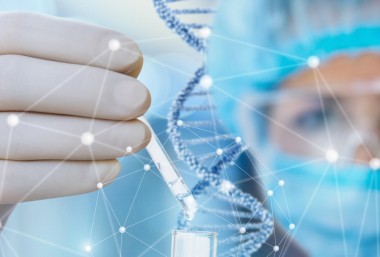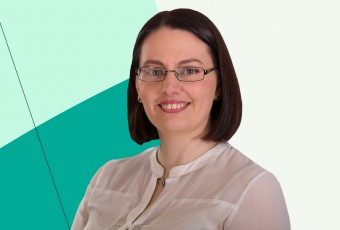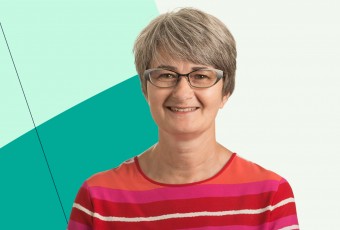In a welcome decision, the Australian Federal Court has confirmed in Sequenom, Inc. v Ariosa Diagnostics, Inc. [2019] FCA 1011 that diagnostic methods remain patentable inventions, even where they rely on the use of naturally occurring phenomena. Australia and New Zealand therefore both continue to provide protection for diagnostic method claims.
Takeaway points from the case
- An artificial use of naturally occurring genetic information may provide patentable subject matter.
- For claims within an existing class of manner of manufacture, patentability depends on whether the claimed invention is for a product made, or a process producing an outcome, as a result of human action (an artificially created state of affairs) and has economic utility.
- The Australian High Court in D’Arcy v Myriad Genetics Inc did not introduce a new inventiveness threshold test when considering whether a claim relates to a mere discovery or observation of a law of nature.
- A method of diagnosis claim may be infringed by using the results of the claimed diagnosis.
International context
This case relates to alleged infringement by use of the ‘Harmony test’, a non-invasive prenatal test for screening certain genetic disorders, which has been the subject of litigation in the US and UK.
In the US, the Court of Appeals for the Federal Circuit held a related method of diagnosis claim did not provide patentable subject matter considering the Mayo decision [see Ariosa Diagnostics, Inc v. Sequenom, Inc, 788 F.3d 1371 (Fed. Cir. 2015)].
In the UK, related claims have been found to provide patentable subject matter in two separate cases (see Illumina, Inc & Anor v TDL Genetics Ltd & Ors [2019] EWHC 1497 (Pat) and Illumina, Inc v Premaitha Health Plc [2017] EWHC 2930).
The details
The applicant (Sequenom) is the patentee of Australian patent 727919 (the patent), which relates to prenatal detection methods using non-invasive techniques, and in particular to prenatal diagnosis by detecting foetal nucleic acids in serum or plasma from a maternal blood sample.
Sequenom brought an infringement action against the respondents, Ariosa Diagnostics Inc, Sonic Healthcare Limited (Sonic) and Clinical Laboratories Pty Ltd (Clinical), collectively referred to as Ariosa. The respondents were alleged to have infringed the patent by licensing, supplying and/or using the Harmony test in Australia.
Ariosa counter-claimed for revocation of the patent on grounds that:
- the relevant claims are not for a manner of manufacture;
- the claimed invention lacks an inventive step;
- the relevant claims are not useful;
- the relevant claims are not fairly based;
- there is a lack of sufficiency; and
- the claimed invention was obtained by false suggestion or misrepresentation.
The patent
The discovery that formed the basis of the claimed invention was essentially that, using standard and routine techniques, foetal DNA could be detected from foetal cells in the blood of pregnant women and that cffDNA could be detected in the plasma and serum of pregnant women. This discovery could be applied to determining the sex of a foetus and screening a foetus for genetic disorders.
Claim 1 of the patent was:
A detection method performed on a maternal serum or plasma sample from a pregnant female, which method comprises detecting the presence of a nucleic acid of foetal origin in the sample.
Manner of manufacture
The judge held the claimed invention was a patentable manner of manufacture following the Australian High Court decision in D’Arcy v Myriad Genetics Inc (2015) 258 CLR 334 (Myriad).
Ariosa contended that the claimed invention was not a manner of manufacture in line with the decision in Myriad. Particularly, Ariosa contended the claimed invention did not involve a ‘manner of manufacture’ because:
- it was a ‘mere discovery’ of a naturally occurring phenomenon that did result in an ‘artificially created state of affairs’; and
- the ‘end result’ was not an artificially created state of affairs because it results in information only.
The judge rejected these contentions.
A key element of this decision was that the judge distinguished the method of diagnosis claims in this case from the isolated nucleic acid claims that were held to not be patentable in Myriad. The Judge observed that in Myriad, if the relevant claims were held to be a manner of manufacture, it would have extended the category of patentable subject matter to a new class of claims. In contrast, the judge found the present claims were directed to inventive methods and processes that are within the ‘plain and vanilla concept of manner of manufacture’.
The judge identified two necessary criteria for patentability of an invention:
- Whether the invention as claimed is for a product made, or a process producing an outcome as a result of human action.
- Whether the invention as claimed has economic utility.
Both questions were answered in the affirmative. It was found that the claimed process was an artificial process having economic utility. A significant factor appeared to be that economic utility was found in the result of the claim, unlike the isolated nucleic acid claims in Myriad, which were merely a step along the way.
The judge also rejected the contention that Myriad introduced a new inventiveness threshold test when considering whether a claim relates to a mere discovery or observation of a law of nature.
Other grounds of revocation
Ariosa was unsuccessful in all grounds of revocation except one. Claim 26 was held to be invalid due to a lack of fair basis.
Infringement
The issue of infringement was not straightforward because it was not immediately clear whether the Harmony test infringed the relevant claims. Ultimately, the judge applied a purposive construction and found all relevant claims were infringed by the Harmony test.
Considering the actions of the individual respondents, Sonic and Clinical were held to have infringed the relevant claims by use of the Harmony test in Australia.
At issue was also a period before Sonic and Clinical used the test in Australia. During this earlier period, Sonic and Clinical collected samples in Australia that were sent to Ariosa in the US for testing and the results were sent back to Australia (referred to in the case as the ‘send out’ period). The issue was whether the test results were a ‘product’ that infringed Sequenom’s exclusive right to ‘exploit’ the invention, as defined in the Act.
This element of infringement relied on the rule that:
a person will be taken to have infringed a method claim of a patent if that person:
... b) exploits, in Australia, a product resulting from the use, anywhere, of the method or process.
The respondents argued that the results merely recorded information and were not a ‘product’ that could be imported (or kept or sold) within the definition of ‘exploit’ in the Act.
The Judge disagreed. He observed that the Harmony test was carried out for the purpose of obtaining the results and the results were clearly commercially valuable.
Ariosa authorised the relevant conduct of Sonic and Clinic, and was held to be liable as a joint tortfeasor.
Summary
The Australian Federal Court confirmed diagnostic methods remain patentable in Australia. Reliance on the use of naturally occurring genetic information is permissible provided the method is the result of human action and has economic utility.
This welcome decision means that both Australia and New Zealand continue to offer good patent protection for diagnostic methods.




